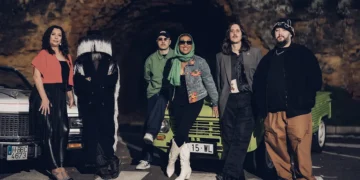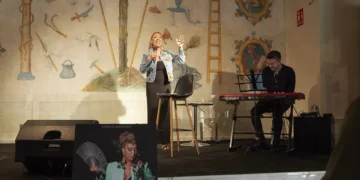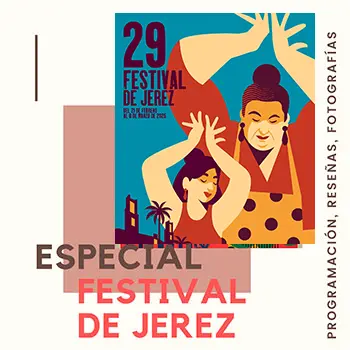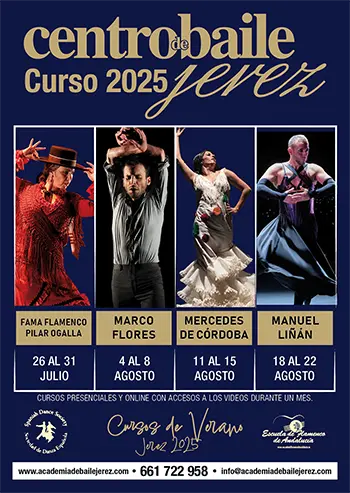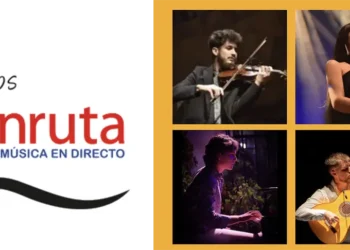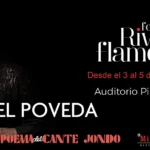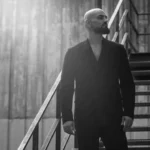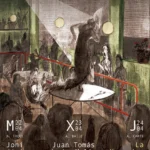We're chatting with one of the best flamenco singers, one of the most recognizable and unique in flamenco, from a Triana family with a long history: the Fernández family. On this occasion Esperanza is presenting her third record, «Mi Voz en tu Palabra», in which she sings to José Saramago.
They always say an artist has to find his or her own personality…with your voice which is so recognizable, it won’t have been difficult to do.
Everyone has their personality, some find it earlier, some later…but no one is born knowing how to sing. In all honesty, I absolutely worshipped Lole (of Lole and Manuel), that was my first inspiration, but it was not meant to be, there’s only one Lole, and from that moment on, I started looking for my own personality, listening to more things, without forgetting her. All the love and respect I had for her, I had to put away in the drawer, and not listen to her any more because it absorbed me too much. I had to take a step back in order to seek out my own personality.
I’ll never forget the first song of yours I heard, “Iré a Santiago”, from the record Los Gitanos Cantan a Lorca, it really got to me…you won me over forever.
Everyone liked that piece, many people commented on it.

So you say people aren’t born doing flamenco…it has to be learned…
It’s in the blood, definitely…José de la Tomasa had a soleá that said:
“From my mother’s womb, I was born to sing with the rhythm in my blood”
Obviously, you also have to study, it takes many years, you never stop learning, it’s not possible to get by on four songs, you have to study. I studied, and continue to study.
But you come from a good family line…
Of course, I’m very lucky to have been born where I was, and the upbringing I had, my father’s teachings, he taught me to be a person before being an artist, to defend myself, defend my voice and what I want to do. My parents taught me a lot.
Your voice is so recognizable…all kinds of people seek you out, from classical to contemporary and also flamenco…they want your voice for their projects…“El Amor Brujo”, “La Vida Breve”…
It makes you realize that flamenco is very rich, that a flamenco voice can do a lot of things, I’m not the first, other people have also done these things, we’ve been very brave, it’s not easy to jump into classical music, jazz… I’m flamenca, and my voice was included in those projects, enriching them and myself at the same time, that allowed to understand other kinds of music, other cultural riches.
I do my traditional flamenco, I’m a flamenca and a gypsy, but if I hadn’t been involved in those projects, I wouldn’t have learned what I now know.
And the people you’ve worked with in flamenco. With Morente in his day, and always with Dorantes…
With Enrique Morente, he knew me all my life, he was a buddy of my father’s and followed my career from the beginning…he believed in young people and supported us, and gave me my first chance at the Maestranza theater with the show “A Oscuras”, it fills me with joy to talk about Enrique, thanks to him I stopped being Curro Fernández’ little girl and became Esperanza Fernández, I owe that to him.
With Dorantes, you speak the same language and have the same way of understanding flamenco.
Aside from music, our relationship is one of mutual admiration, and this brought us together in many places, we’ve collaborated on a number of projects, if Dorantes asks me to do something, I jump in without a second thought. That also shows on this record.
And this project of singing the poetry of José Saramajo, how did it come about, who proposed the idea?
No one. I’d been a long time without recording, and I was thinking of making another record. A friend of mine told me about José Saramago, but I’d never read anything of his. At the Maestranza I saw a documentary devoted to him and his wife, and it captivated me, I fell in love with his way of being, a true gentlemen through and through, in love with his wife, his way of looking at life…he really communicated something to me. When I left the theater I knew I wanted to do it. I researched his poetry, who’d sung it before, they told me Luis Pastor made a recording, so it was very clear to me that I wanted to do it.
It’s not easy to adapt poetry to music.
When they told his wife Pilar that there was a project to put a flamenco voice to the verses of José Saramago, she thought it couldn’t be done, that the meter was wrong, that it was too difficult to put to flamenco. It seemed an impossible undertaking two years ago at the book fair in Seville. I adapted two poems so she could hear me, and then she saw that it was possible after all…so we got down to work with Pilar’s blessing.
How did you go about selecting the poems?
It was a time-consuming job, lots of fine-tuning…I would read the poems to see which were best, Juan Blanco also helped me alot, he knew the work of José Saramago well…it was a lot of poems, none that you could reject offhand, but a selection had to be made. I followed my heart, I read and my heart made the decision.
And the music?
From the start it was definite that Dorantes would be the producer…I told him so, and he was very supportive. Between the two of us we put the pieces together, the music and the poems, always together. I also have José Miguel Évora whom I asked to participate in the project, he set two of the poems to music, really beautiful.
And the idea of including a garrotín?
The garrotín was Dorantes’ idea, but there was a lot of debate, we didn’t know if it would work…garrotín is not a usual piece. But as soon as I heard a couple of notes played by David, I realized it was perfect, no doubt in my mind whatsoever, and we have it as the first piece on the record.
And “En la Esquina del Tiempo” in a sort of tanguillo rhythm.
That’s a poem Luis Pastor used on his recording, and we also recorded it, and took it into a different rhythm, tanguillo or tangos.
Besides Dorantes and José Miguel Évora, who else was involved in the project?
On guitar, there’s Miguel Ángel Cortés, Eduardo Trassierra, in addition to Salvador Gutiérrez on the piece “Alegría”, which is tangos. They all regularly worked with me and knew me very well. On percussion, Cuban Jorge Pérez. My brother José is also on the percussion and the palmas, Yelsi Heredia on upright bass, the Mellis do chorus for some of the pieces, and in the garrotín there are three students of mine singing, Natalia, Vicky and Anastasia, it’s really pretty. Raúl Rodríguez is also there with the Cuban tres for “Esta Esquina del Tiempo”, and Ricardo Moreno, a guitarist from Lebrija who’s on the same piece. Everyone who participated put their heart and soul into the work, and it really shows when you hear the record.
“Mi Voz en tu Palabra” is the record, but it’s also conceived for live performance. What is the show going to be like?
There are a variety of formations, naturally. Here in Madrid, there’ll be two guitars, percussion, voices, Yelsi’s bass and also dancer Sonia Olla. In Seville we’ll also have Dorantes, because he wasn’t able to come here, he already had work.
This is the large format…and I hope we can bring it to a lot of places, although we also do it as a quartet or quintet, with another sound, but it’s fine, we can do all the pieces perfectly, you’ll see…voice, guitar and percussion sounding perfectly.






